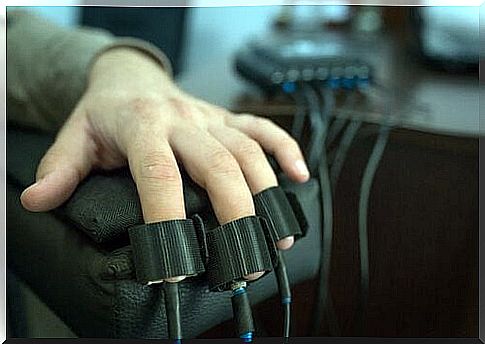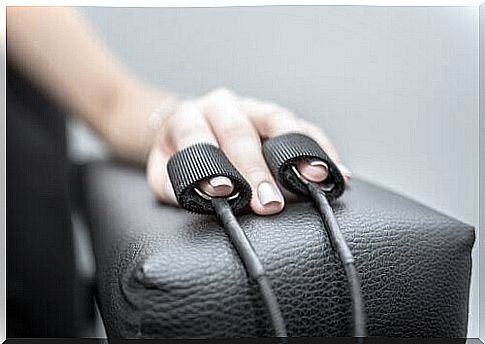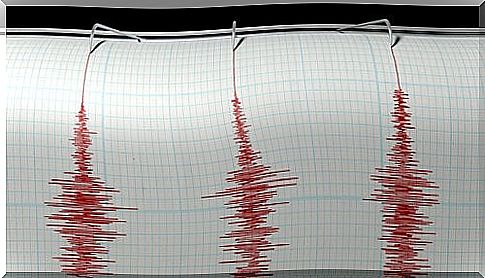The Polygraph: Is It Efficient?

The polygraph, commonly known as a “lie detector”, is an instrument that was created in the 20th century. Etymologically, this word derives from polite, which means “a lot”, and from grafos, which refers to graphics and writing. Thus, we can say that the polygraph is that machine responsible for generating a multitude of graphics simultaneously. But, what do these graphs measure? Quite simply, they determine the physiological response of the person being tested.
This instrument was created for the purpose of seeing the reflection of emotions in physiological responses. That is, if I’m scared, it will result in excessive sweating, increased heart rate, restless breathing, for example. In particular, the polygraph has been used with people suspected of having committed a crime to try to determine through their testimony whether they are lying or telling the truth.
From the 1920s, we started to develop the idea of creating a machine that could detect “the lie”. This is how we witnessed the birth of the polygraph, which William Marston was responsible for giving shape to this project. He created a lie curve based on different blood pressure measurements. However, the results of his lie detector are not considered proof, and therefore this test is also not considered a valid procedure by the scientific community.
Later, Larson, a psychiatrist and policeman from Berckley, built a modified version of the lie detector ; with it, he wanted to modernize the security corps and avoid the brutality that was sometimes used to obtain testimonies. He therefore introduced another means of measurement than blood pressure: the respiratory rate. Its aim was to increase the accuracy of the results. So, in 1924, the polygraph began to be used in police investigations.

However, to get to the polygraph we know today, this intermediate version would have to be given a facelift; Keeler has therefore developed a third and new version. Thus, electro-dermal conductivity has become a new method of measurement. Simply put, it is the extent to which our skin is able to conduct electricity ; in fact, we started from the principle that doubt, and by extension lying, intensified the conductivity of our skin. This physiological reaction is linked to fear or anxiety.
Two tests which will be used to a greater extent by means of the polygraph. Their procedure is different, but both are based on the formulation of questions; the purpose of these processes is to create certain emotional alterations in the suspect potential so as to see them physiologically exteriorize.
In other words, the Test of the Control Question. This is the most used. It is characterized by the formulation of three distinct types of questions: impertinent questions, relevant questions, and control questions.
These are the questions that are not going to offer any kind of important information. They are general and have no connection with the matter under investigation. The person is not expected to exhibit any type of arousal (activation) when responding to it.
Unlike the previous ones, these questions are related to the case. These are specific questions about the event being investigated. We expect the answers to be negative (giving an affirmative answer would mean confessing and acknowledging the facts) and the culprits to experience greater activation (both emotional and physiological).
These questions are very ambiguous. They are imprecise, and formulated in such a way that it is impossible to answer them negatively without doubting the answer itself. They refer, in most cases, to facts far removed from the case at the center of the investigation.
They are unrelated to the case, but may refer to actions the person has performed in the past that may bear some similarity to what happened. For example, if the offense was murder, the test subject is asked if he has ever harmed someone in his life. With this, we expect as many guilty as innocent people to present the same arousal .
Thus, the goal that we are trying to achieve is that the innocent show greater activation in the face of questions of control. Since they are ambiguous, they will fear that they will be wrong in answering them. On the other hand, the activation will be less when they answer the relevant questions, because they have nothing to do. However, the culprits will show greater activation in answering the relevant questions, because at the end of the day, the consequences derived from such questions are greater than those arising from the control questions.
This is the test of knowledge of the culprit. It refers to the knowledge that the culprit must have in the case. We ask different questions with a multiple choice of answers, where only one answer is correct.
It is assumed that the culprit will know what this correct answer is, because he will present a greater arousal when the said answer is offered. However, the innocent, who does not know the case, should exhibit the same level of activation in the face of all possible answers, not knowing which is the correct one. Thus, the correct answer must be totally recognizable to the culprit, but just as likely as the other options to the innocent.

Despite the use that has been made of it for years, it can be said that there are certain limits which would reduce the reliability that one wanted to give to the polygraph. The National Research Council released a report on the polygraph in 2003. For example, it analyzed the psychological bases on which this instrument was based or the procedures that followed. The most important conclusions that have been drawn are as follows:
- Precision of the polygraph: the physiological responses measured by the latter do not respond only to lying. In other words, there is a great variety of psychological processes which can be physiologically exteriorized in the same way as lying. This would severely limit the precision that one tries to achieve by means of the polygraph.
- Theoretical bases : the scientific theoretical bases on which the polygraph rests are very fragile. The terms fear, arousal or other emotional terms are not well defined.
- Because of this, polygraph measurements are not at all reliable when generalizing these results to other populations or to groups other than those who obtained the said results. Finally, we cannot generalize the information to other people than those who have been tested.
- Realism of the evidence: The laboratory investigation does not adjust to the reality of the evidence. In this case, the consequences of determining whether a person is lying or not are not going to be very significant. However, this lack of realism in the investigation can lead to serious problems in real life, thus presenting a high rate of errors when testing innocent people.
- The polygraph is used when there is not sufficient evidence to incriminate a suspect, as the results of the polygraph cannot be contrasted in any way.
- There are countermeasures that still allow you to lie, even when you are tested by the polygraph: the control of physiological measurements and responses can be learned, by giving the answers you want and not the ones. that one tries to obtain from oneself with the polygraph proof.
Although we have only highlighted some limitations here, the report points out much more. From there, we can deduce that indeed, the polygraph moves away from a flawless reliability, which is worrying if one thinks of the field in which it is used.
What is certain is that the polygraph has various deficiencies which have not been corrected. This should set our alarms on, since resorting to a method that does not ensure accurate lying results can significantly increase the likelihood of conviction of people who are in reality innocent.
National Research Council, (2003). The Polygraph and lie detection., Washington, DC: The National Academies Press









